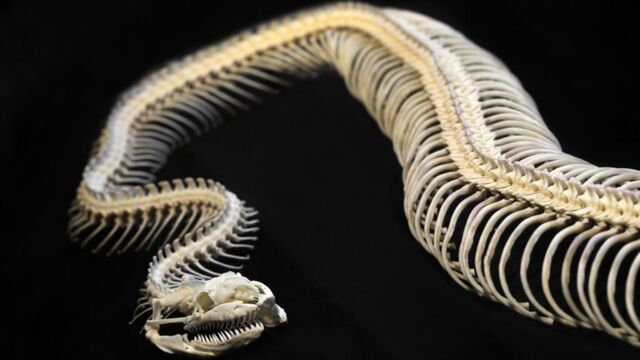Researchers find mysterious 47-million-year-old snake that holds a big secret

German and Argentinean researchers have made a sensational find in Germany. The snake fossil found is 50 centimetres long and is 47 million years old.
Snakes lay eggs, don't they? Researchers at the Senckenberg Gesellschaft für Naturforschung in Frankfurt confirm that there are several species of lizards and snakes that give live births to their offspring. Ancient evidence of this comes from the Messel UNESCO World Heritage Site in southern Hesse, Germany.
Discover our latest podcast
Offspring instead of eggs
Behind these Latin terms is that the snake species found gave birth to its babies alive (vivipar) instead of laying eggs (ovipar). According to the institute, the Messel's boa dates back to the Eocene period and is related to today's dwarf boas of Central America.
More under this adMore under this adMessel boa: #Livebirth in a 47-million-year-old snake @Senckenberghttps://t.co/ozoOTdhb3Fhttps://t.co/Jzpsp7A3sK
— Phys.org (@physorg_com) November 15, 2022
The results were published in the journal, The Science of Nature. The find has the team in raptures, as it is one of the first of its kind. Researcher Dr Krister Smith is quoted on the Senckenberg Museum site:
More under this adMore under this adFossil preservation of reproductive events is generally very rare. In total, only two fossil records of viviparous terrestrial reptiles have been discovered so far.
We have now succeeded in describing the world's first fossil of a viviparous snake!More under this adMore under this ad
The proof is in the embryo bones
How can the team match the ancient bones so accurately? Dr Mariana Chuliver and Dr Agustín Scanferla from Argentina explain that the tiny skull bones were found inside the boa behind the stomach.
If they were prey animals of the snake, they would have already decomposed so far back in the intestine and would no longer be recognisable. They must therefore be embryos of the boa. Furthermore, the bones are more developed than in an unlaid egg, which is why they most likely come from a 'pregnant, viviparous female'.
More under this adMore under this adA mystery remains
However, scientists are still in the dark about one thing. Live births are more likely to occur in colder areas to protect the brood, as the temperature inside the mother animal is much warmer.
At the time of the Eocene, however, a greenhouse climate generally prevailed and the average temperature around Messel was a comfortable 20°C. So the answer to why the boa species gave birth rather than lay eggs remains a mystery of the fossil.
More under this adMore under this adThis article was translated from Gentside DE.
Sources used:
-senckenberg.de: Messelboa: Lebendgeburt einer 47 Millionen Jahre alten Schlange